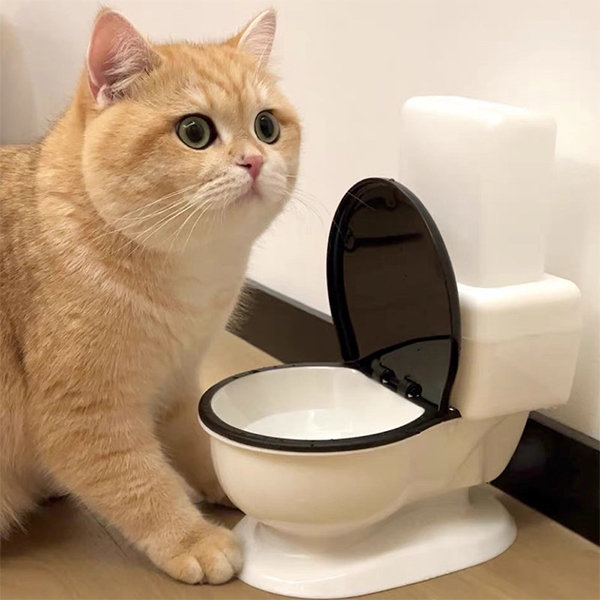Don't Flush Cat Poop Down Your Toilet - Preserve Your House's Pipe System
Don't Flush Cat Poop Down Your Toilet - Preserve Your House's Pipe System
Blog Article
What are your thoughts concerning How to Dispose of Cat Poop and Litter Without Plastic Bags?

Introduction
As cat proprietors, it's important to be mindful of how we get rid of our feline good friends' waste. While it may seem convenient to flush pet cat poop down the commode, this method can have detrimental consequences for both the atmosphere and human wellness.
Alternatives to Flushing
Luckily, there are more secure and a lot more liable ways to dispose of pet cat poop. Consider the complying with alternatives:
1. Scoop and Dispose in Trash
The most usual method of throwing away cat poop is to scoop it right into a biodegradable bag and throw it in the trash. Make sure to utilize a devoted trash inside story and deal with the waste quickly.
2. Usage Biodegradable Litter
Opt for eco-friendly cat clutter made from products such as corn or wheat. These trashes are environmentally friendly and can be securely gotten rid of in the garbage.
3. Bury in the Yard
If you have a backyard, consider hiding feline waste in a designated location away from vegetable gardens and water sources. Make sure to dig deep enough to prevent contamination of groundwater.
4. Mount a Pet Waste Disposal System
Invest in a pet garbage disposal system specifically created for pet cat waste. These systems use enzymes to break down the waste, minimizing smell and ecological impact.
Health Risks
In addition to environmental worries, flushing feline waste can likewise present wellness risks to humans. Cat feces may consist of Toxoplasma gondii, a parasite that can trigger toxoplasmosis-- a possibly extreme illness, particularly for expecting ladies and people with damaged body immune systems.
Ecological Impact
Purging pet cat poop presents hazardous pathogens and parasites into the water system, posturing a significant risk to water environments. These impurities can adversely impact marine life and compromise water high quality.
Verdict
Liable pet ownership expands beyond providing food and shelter-- it also involves proper waste administration. By avoiding flushing feline poop down the bathroom and choosing alternate disposal techniques, we can reduce our ecological impact and shield human wellness.
Why Can’t I Flush Cat Poop?
It Spreads a Parasite
Cats are frequently infected with a parasite called toxoplasma gondii. The parasite causes an infection called toxoplasmosis. It is usually harmless to cats. The parasite only uses cat poop as a host for its eggs. Otherwise, the cat’s immune system usually keeps the infection at low enough levels to maintain its own health. But it does not stop the develop of eggs. These eggs are tiny and surprisingly tough. They may survive for a year before they begin to grow. But that’s the problem.
Our wastewater system is not designed to deal with toxoplasmosis eggs. Instead, most eggs will flush from your toilet into sewers and wastewater management plants. After the sewage is treated for many other harmful things in it, it is typically released into local rivers, lakes, or oceans. Here, the toxoplasmosis eggs can find new hosts, including starfish, crabs, otters, and many other wildlife. For many, this is a significant risk to their health. Toxoplasmosis can also end up infecting water sources that are important for agriculture, which means our deer, pigs, and sheep can get infected too.
Is There Risk to Humans?
There can be a risk to human life from flushing cat poop down the toilet. If you do so, the parasites from your cat’s poop can end up in shellfish, game animals, or livestock. If this meat is then served raw or undercooked, the people who eat it can get sick.
In fact, according to the CDC, 40 million people in the United States are infected with toxoplasma gondii. They get it from exposure to infected seafood, or from some kind of cat poop contamination, like drinking from a stream that is contaminated or touching anything that has come into contact with cat poop. That includes just cleaning a cat litter box.
Most people who get infected with these parasites will not develop any symptoms. However, for pregnant women or for those with compromised immune systems, the parasite can cause severe health problems.
How to Handle Cat Poop
The best way to handle cat poop is actually to clean the box more often. The eggs that the parasite sheds will not become active until one to five days after the cat poops. That means that if you clean daily, you’re much less likely to come into direct contact with infectious eggs.
That said, always dispose of cat poop in the garbage and not down the toilet. Wash your hands before and after you clean the litter box, and bring the bag of poop right outside to your garbage bins.
https://trenchlesssolutionsusa.com/why-cant-i-flush-cat-poop/

I'm very intrigued by Can You Flush Cat Poo or Litter Down the Toilet? and I really hope you appreciated the new piece. Sharing is good. You just don't know, you may very well be helping someone out. We appreciate reading our article about Can You Flush Cat Poo or Litter Down the Toilet?.
Source This Article Report this page